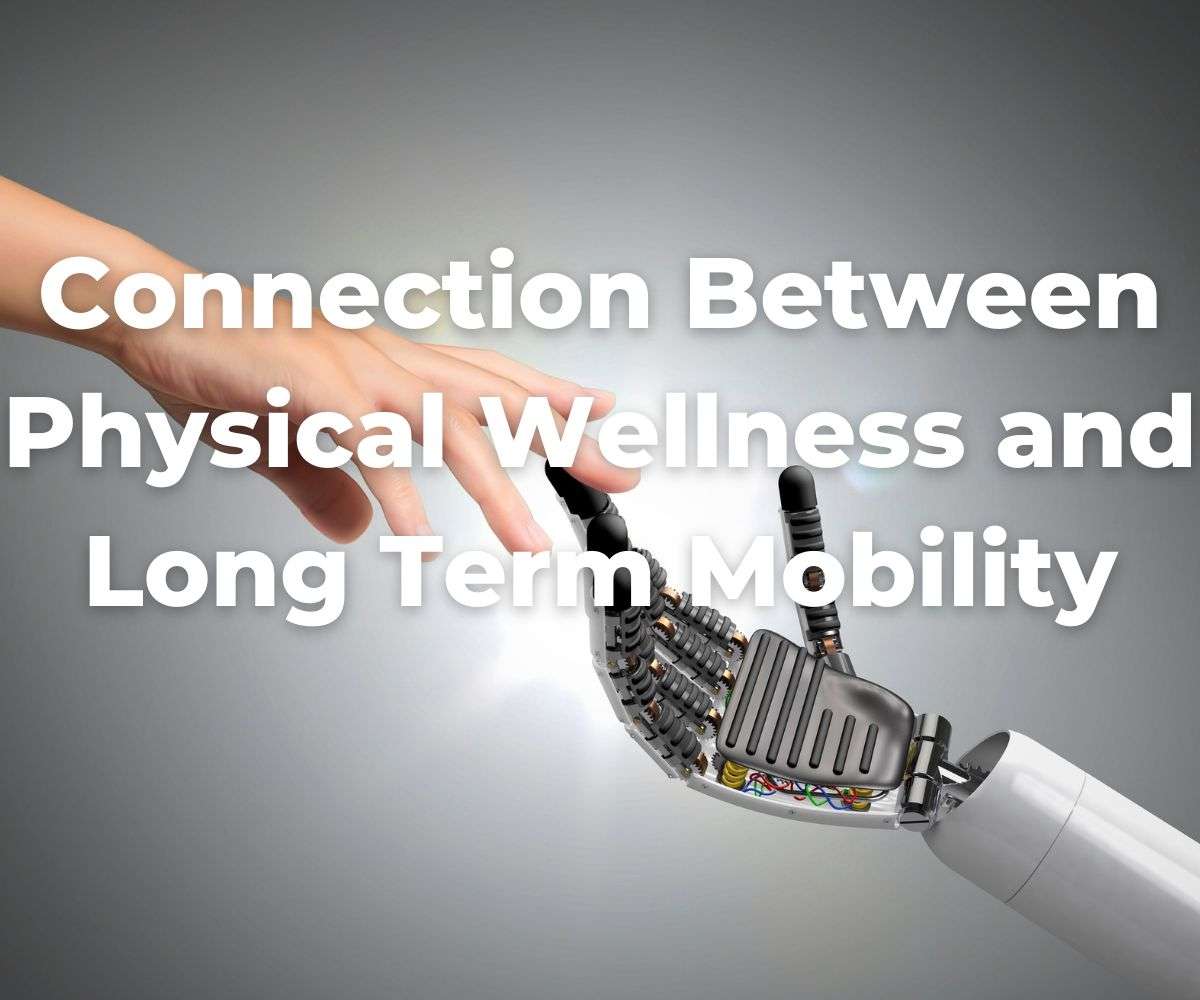connection between physical wellness and long term mobility
Description
The Connection Between Physical Wellness and Long-Term Mobility
Physical wellness is more than a trend or personal goal—it’s a fundamental component of maintaining long-term mobility and overall quality of life. Our ability to move freely, participate in daily activities, and stay independent as we age is directly linked to the choices we make about physical health today.
By prioritizing physical wellness, we can secure a future where movement and vitality remain a part of our lives.
This comprehensive guide explores the connection between physical wellness and long-term mobility. We'll discuss key areas like exercise, diet, posture, and how addressing underlying issues like chronic pain or conditions such as neuropathy plays a crucial role in staying mobile for years to come.
Why Long-Term Mobility Matters
Mobility—the ability to move freely and easily—often goes unnoticed until it becomes limited. Whether walking unaided, climbing stairs, or balancing during a daily task, mobility is central to independent living. Reduced mobility can impact mental health, social connections, and even cognitive function over time.
Long-term mobility isn't just about avoiding a sedentary lifestyle. It’s about retaining the ability to live fully, from the practical to the pleasurable, whether that’s gardening, traveling, or playing with your grandchildren.
How Physical Wellness Supports Mobility
Physical wellness encompasses habits that keep your body strong and healthy. These include regular exercise, a balanced diet, and preventative care to address issues long before they become obstacles to movement.
Specifically, physical wellness supports mobility in the following ways:
1. Muscle Strength and Joint Stability
Daily movement and strength exercises can significantly improve muscle tone and joint stability, both of which are essential for maintaining balance and preventing falls. Strong muscles also take pressure off joints, potentially reducing the risk of arthritis and other conditions that can limit mobility.
2. Flexibility and Range of Motion
Stretching and flexibility exercises maintain your range of motion and allow your body to move naturally. Regular yoga or targeted stretches can help lengthen tight muscles and reduce stiffness, promoting fluid movement for years to come.
3. Healthy Weight Management
Excess weight puts additional stress on joints, especially in weight-bearing areas like the knees, hips, and lower back. Maintaining a healthy weight through proper diet and exercise can prevent or alleviate pain while making movement easier as you age.
4. Neuropathy and Chronic Pain Management
Conditions like neuropathy, causing pain, numbness, or tingling, can severely limit movement over time. Early Neuropathy Treatment Clinic interventions can help preserve both sensation and mobility by addressing underlying causes. These treatments reduce symptoms, enabling patients to stay active and independent.
Core Pillars of Physical Wellness for Mobility
A well-rounded physical wellness plan addresses three main pillars that directly influence your ability to maintain long-term mobility:
1. Regular Exercise
Exercise enhances muscle strength, flexibility, and bone density—three essentials for movement. Focus on the following aspects to create a well-rounded routine:
-
Cardio: Walking, swimming, or cycling improves cardiovascular health, creating lasting stamina for physical tasks.
-
Strength Training: Weightlifting or bodyweight exercises, such as squats or push-ups, strengthen key muscle groups needed for stability.
-
Stretching: Yoga or Pilates can improve flexibility and posture while reducing stiffness or chronic pain.
Consistency is key. Even short daily walks can have a significant, cumulative impact on mobility over time.
2. Optimal Nutrition for Joint and Muscle Health
What we eat directly impacts how our bodies feel and function. Certain nutrients promote healthy muscles, strong bones, and pain-free movement:
-
Calcium and Vitamin D: Essential for maintaining bone density, preventing mobility-limiting fractures as you age.
-
Protein: Supports muscle strength and recovery post-exercise.
-
Anti-Inflammatory Foods: Omega-3 fatty acids (found in fish or flaxseed), antioxidants, and fruits like berries reduce inflammation in joints and tissues.
Hydration is equally important—dehydration can contribute to joint pain, stiffness, and fatigue, limiting your desire to move.
3. Address Postural Alignment
Good posture reduces strain on your joints and allows your body to move efficiently. Poor posture, on the other hand, can lead to chronic back pain or tightness that limits your range of motion.
To maintain alignment:
-
Adjust screen heights to avoid slouching while working.
-
Engage your core to keep your spine stable during daily tasks.
-
Invest in ergonomic furniture or consult a physiotherapist if chronic issues persist.
Preventative Care for Long-Term Mobility
Preventative care ensures small issues today don’t become significant obstacles tomorrow. Here are three areas to assess regularly:
1. Early Intervention for Pain
If you experience persistent discomfort—be it in your joints, back, or feet—consulting a specialist early can prevent further complications. For example, those experiencing symptoms of nerve pain may benefit from visiting a Neuropathy Treatment Clinic.
2. Regular Check-Ups
Annual wellness exams track your physical health over time, from bone density to muscle tone. Diagnostic tests, like bone scans, can pre-empt mobility challenges before they surface.
3. Focus on Mental Health
Physical and mental well-being are interconnected. Chronic stress or anxiety can indirectly affect mobility by decreasing energy or motivation to stay active. Mindful practices like meditation or breathwork can help.
Common Challenges to Physical Wellness
Staying consistent with wellness routines is easier said than done. Here are a few obstacles and potential solutions:
1. Lack of Time
Solution? Break workouts into smaller, manageable portions—15 minutes in the morning or during lunch adds up over time.
2. Injury Recovery
Recovering from injuries requires patience and care. Focus on gentle physical therapy or mobility work to maintain function during your recovery period.
Building Sustainable Habits Today
The connection between physical wellness and long-term mobility cannot be overstated. By paying attention to your movement, diet, posture, and preventative care, you can set yourself up for a future filled with freedom and independence.
Invest in yourself today—your future self will thank you.
Similar blog:
What Justifies the Value of Nutritional Counseling?






















